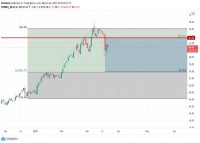|
Introduction Islamic Finance - Topic Zero What is Islamic finance? An obvious place to start it seems, yet the textbook definition of Islamic finance has typically focused on the non-permissible activities, the quantitative & qualitative screens, what you can't do. In fact, newcomers are often confounded by the concept of riba (usually over-simplified as the prohibition of interest) whereas we will delve extensively into this concept (and many others) as we converse with practitioners, scholars and industry experts. We introduce a more exact definition - Islamic finance is a business ethos that emphasizes the principle of risk-sharing (as opposed to risk-transfer), promotes asset ownership (rather than leverage), encourages prudent investing (by avoiding unethical concerns), all this in accordance with guidelines set forth in the holy scriptures of Islam. What is the objective? Islamic finance is borne out of the desire by Muslims to follow the teachings of their faith, but Shariah compliant products are not exclusive to Muslim consumers the appeal for prudent & judicious investing is universal. Remarkably though, much introductory material seldom mentions the concept of profit & loss sharing (PLS) and this risk-sharing principle goes to the core of what is the ultimate purpose of Islamic finance (here again the purpose or Maqasid of Shairah will be something we will elaborate further). PLS in itself is a source of debate, there is either too much of it (a recent IMF paper1 has argued that while Islamic banks grow their balance sheets some fail to deploy effective risk management policies to monitor/control PLS) or there is too little of it (a strong undercurrent of opinion argues that certain Islamic instruments have a PLS-facade2 and effectively transfer risk to the consumer in an effort to mimic conventional products). How to achieve Shariah compliance? This is achieved through a compliance function that is unique to Islamic finance, one that is both internal and external in nature. Internally it serves as an additional layer of supervision (a combination of auditor, legal advisor, and board of directors rolled into one) which has significant emphasis on contracts & product documentation. Hence a firm must engage and appoint a Shariah counsel which can take the form of an individual Scholar, an in-house Shariah Supervisory Board (SSB) or a third-party Shariah advisory firm (which in turn will have its own SSB). The choice boils down to the number of products involved, cost/benefit considerations, overall complexity, etc. Thereafter an external audit must be maintained, a periodic review of the firm's methodologies to ensure they comply with the appropriate standards. What standards to follow? The Shariah counsel will draft the guidelines and put in place the procedures for creating the company's products. The specific standards will be reflective of the investor-base that the product is crafted for (since there are different schools of Shariah across various regions and countries). These procedures can be described as being both rule-based (exemplified by the AAOIFI3 standards) and principle-based (the regulatory/prudential approach taken by the IFSB4). A notable challenge surfaces when products are offered across jurisdictions (where interpretation of the laws might differ) so ensuring cross-border acceptance would be vital to the marketability of these instruments. This is by all means an over-simplified introduction to Islamic finance, yet we will endeavour to scrutinize every single one of its components in much more detail in this and in future editions. FOOTNOTES 1 - Refer to "Islamic Banks and Financial Stability: An Empirical Analysis", Martin Cihak and Heiko Hesse, IMF Working Paper, Monetary and Capital Markets Department, International Monetary Fund, 2008. See reference link. 2 - For example see "Lack of Profit Loss Sharing in Islamic Banking: Management and Control Imbalances", Humayon A. Dar and John R. Presley, Centre for International, Financial and Economics Research, Department of Economics, Loughborough University, 2000. See reference link. 3 - AAOIFI: Accounting and Auditing Organization for Islamic Finance Institutions See reference link. 4 - IFSB: Islamic Financial Services Board Reference Link. Featured Resource A unique feature of Opalesque Islamic Finance Intelligence is its emphasis on developing a virtual community that enables direct discussions with practitioners from around the globe. Here are some of the tools available to readers: - Opalesque Islamic Finance Briefing Archive: enjoy immediate access to over 3,000 industry articles through a fully searchable archive - either by category, keywords or by dates to access the published news on that date. - Islamic Finance Resources Blog & LinkedIn Group: Opalesque Islamic Finance Intelligence supports this interactive community with discussions, debates and an extensive library of industry papers. Effectively accessing over 1,500 industry professionals. |
Opalesque Islamic Finance Intelligence
Introduction: A Primer on Islamic finance Featured Resource: Islamic Finance Resources blog and online community |
|





 RSS
RSS








